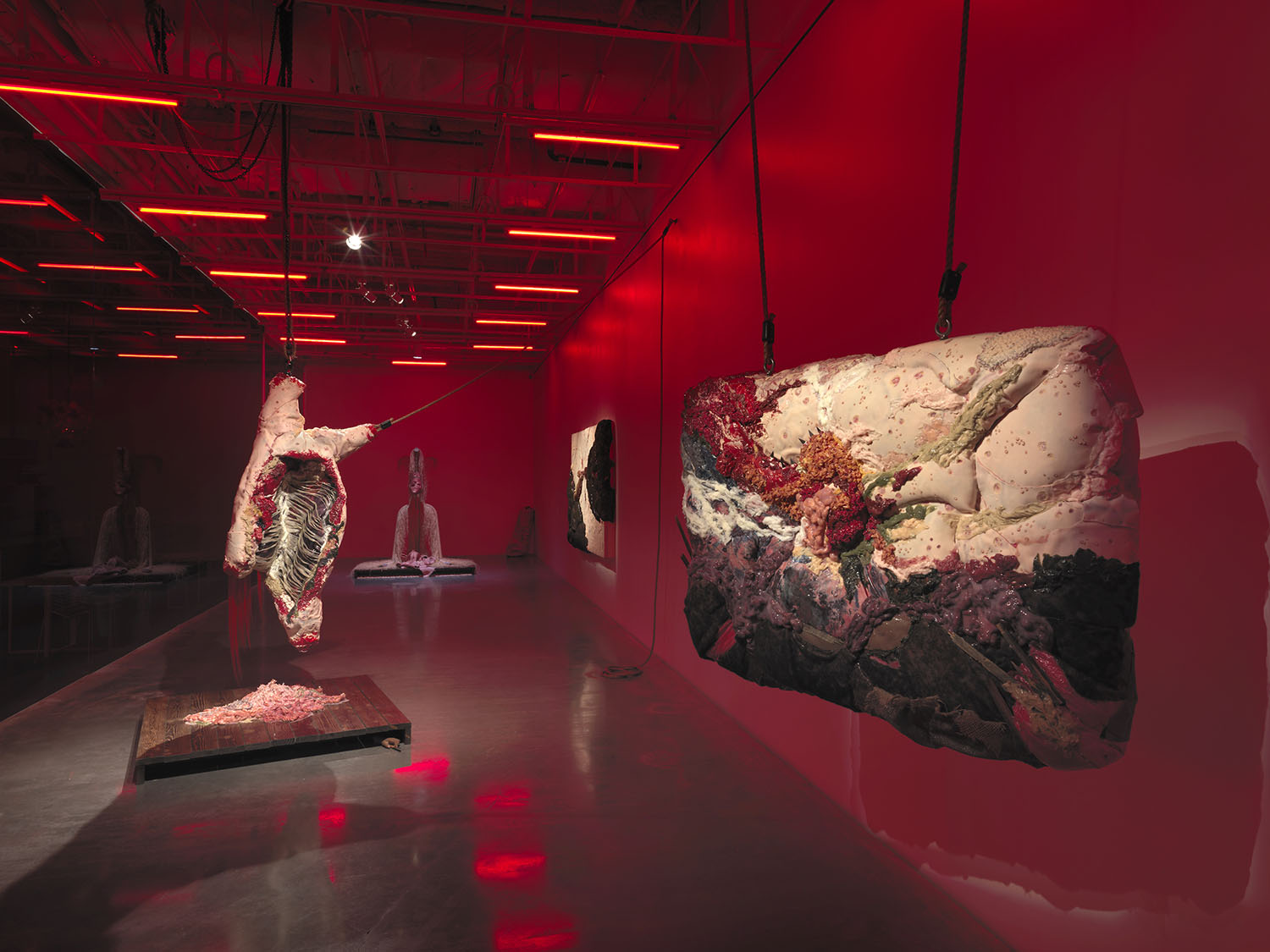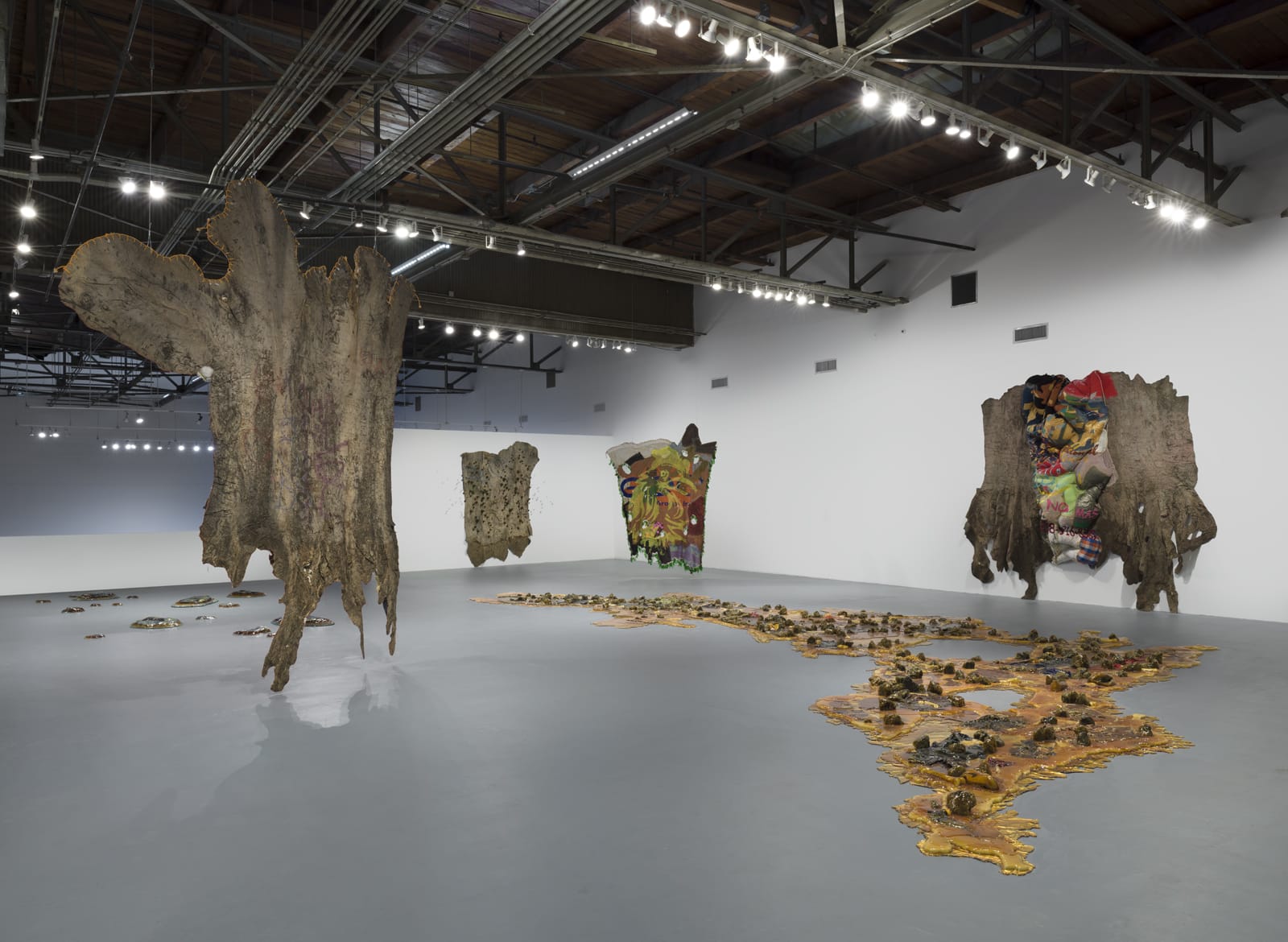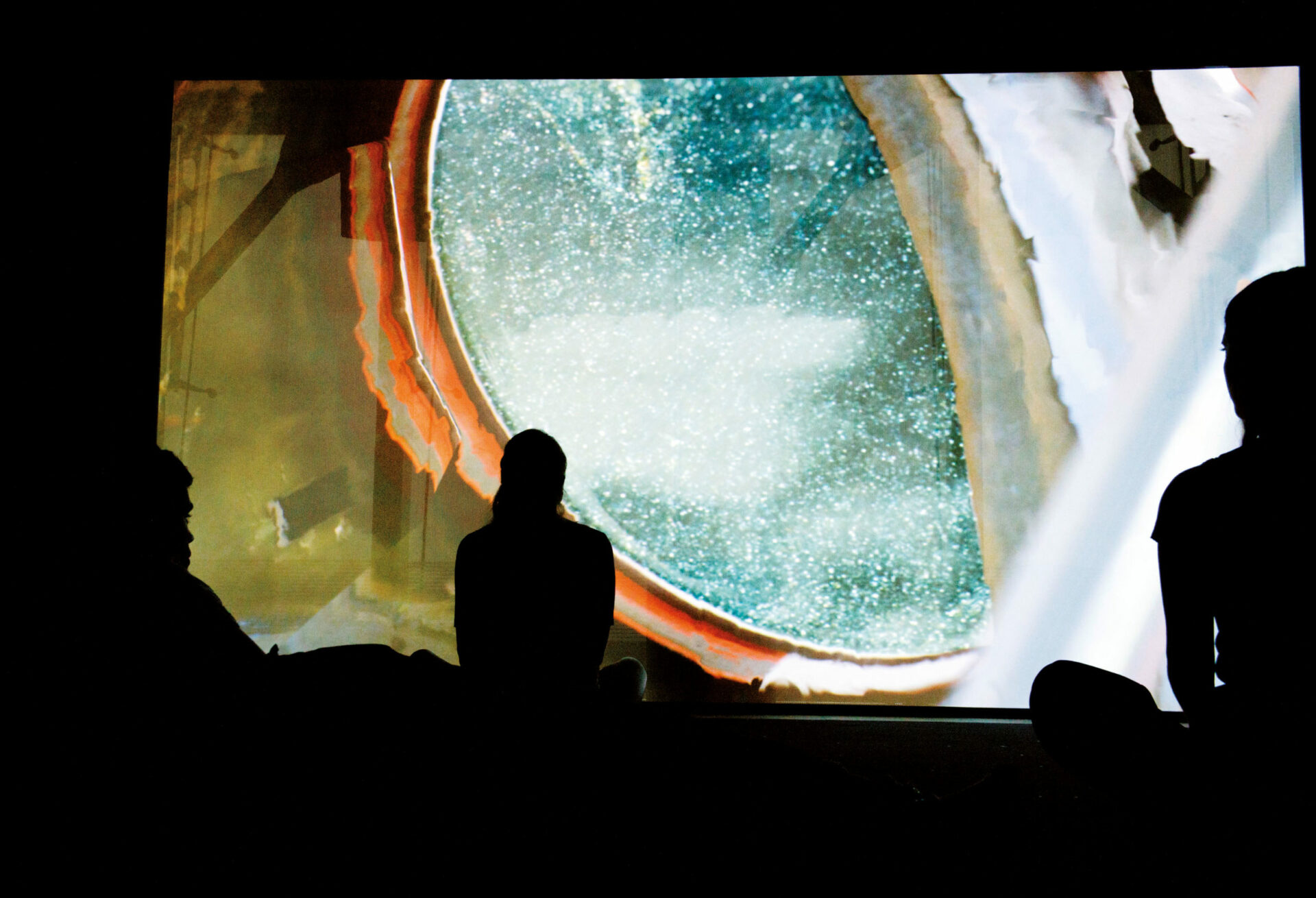
New Museum, New York, 2022.
Photo: Dario Lasagni, courtesy of the New Museum, New York
New Museum, New York
June 30-October 16, 2022
June 30-October 16, 2022
[En anglais] Lately, it seems, some of the best contemporary art is wholly about collapse: the collapse of the boundaries that separate human from non-human; the collapse of historical metanarratives; the collapse of forces that divide peoples; and the collapse of the thin line that at times still separates high art from craft in the minds of many. The crumbling of power structures lies at the core of Doreen Lynette Garner’s hauntingly beautiful and devastatingly honest exhibition at the New Museum. Bathed in deep crimson lightning floor to ceiling, the gallery walls summon at once the viscerality of warm-blooded livingness and the detached solemnity of imperial draperies. Contamination, purity, evidence, and denial flicker in the dimly lit gallery space. The ethical and moral paradoxes that define Christianity, colonialist ideologies, and science—the key cultural forces that have shaped modern Western history—are mercilessly exposed by Garner’s cathartic practice. The focus is on accountability; the strategy is highly persuasive. History is being critically addressed and rewritten.
There are only a handful of works in the gallery, but each bears an enormous gravitas: arresting, often iconic, and at times totemic, every sculptural piece confronts the viewer with overwhelmingly beautiful and complex corporealities that bravely veer into abjectness. Each piece in the show is the result of dedicated and painstaking craft that summons an uncanny, often disturbing spirit. Assemblages of threads, beads, fibres, leather, and other materials are stitched and woven together to untangle the metanarrative strands that for centuries have intentionally concealed the sequence of brutalities that goes by the name of modern history.
Créez-vous un compte gratuit ou connectez-vous pour lire la rubrique complète !
Mon Compte


